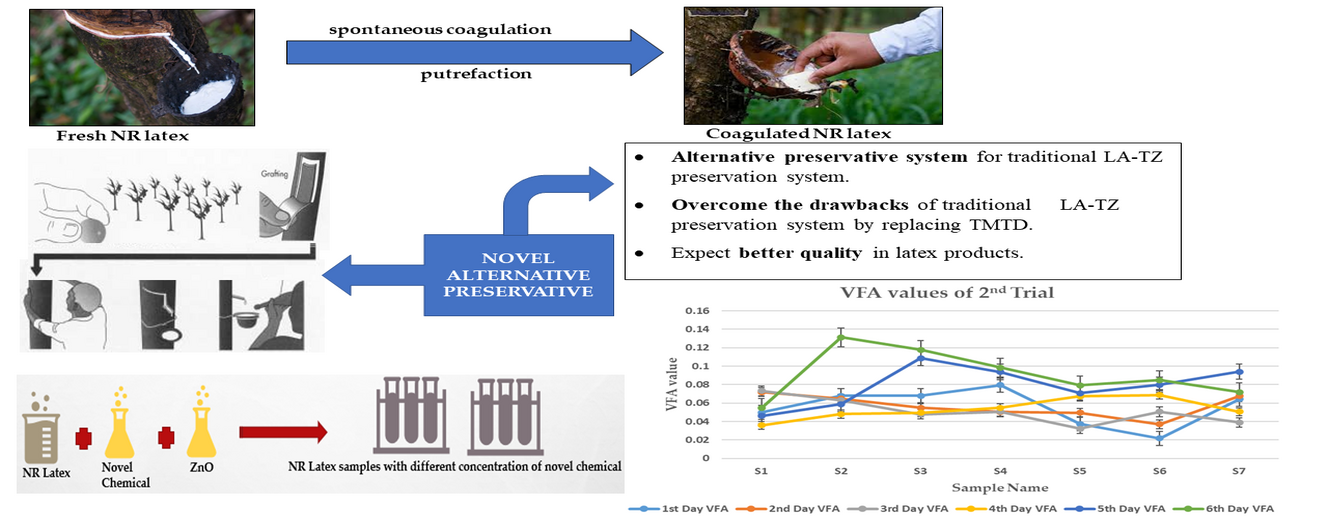Investigation of Field Performance and Film Properties of Natural Rubber Latex Preserved with a Novel Chemical
DOI:
https://doi.org/10.31357/ait.v2i1.5453Keywords:
natural rubber, latex preservatives, novel preservative, TMTDAbstract
The traditional long-term preservative system of latex has an impact on environmental air pollution by ammonia and leads to the production of carcinogenic nitrosamine substances by tetramethyl thiuram disulfide (TMTD). In this research, ammonia and a novel preservative with a polysulfidic link were compounded and tested as a novel traditional long-term latex preservative system, to overcome the drawbacks of traditional preservative systems. Control samples were prepared with ammonia as the standard preservative. In addition, ammonia and the novel chemical mixed samples were also prepared for investigating the combined effect. After the preservation treatment, the stable nature of field NR latex was evaluated via the Volatile Fatty Acid (VFA) test based on ASTM D 1076 standard. The Dry Rubber Content (DRC) test and Total Solid Content (TSC) test were carried out for VFA calculation purposes based on ISO126:2005 and ASTM D 1076 standards, respectively. The alkalinity test was carried out to maintain the required ammonia content in latex. In the first trial, traditional dispersion preparation of novel chemical dispersion failed due to the large particle size of the novel chemical. Therefore, two different novel chemical dispersions were prepared in the second trial, where dispersions 1 and 2 were prepared with wetting agents and without using a wetting agent, respectively. It was found that 0.020%v/v and 0.025% v/v concentrations of the novel chemical from dispersion 1 allowed the preservation of field NR latex for 8 days. A low concentration (0.015% v/v) of the novel chemical was able to keep latex with good stability for 5 days. The novel chemical dispersion without a wetting agent exhibited a marvelous preservative system to NR latex than with a wetting agent, because the wetting agent creates a barrier between particles of novel chemical and latex particles. The novel preservative acts as a good preservative while reducing the fumes of ammonia being emitted and eliminating the carcinogenic nitrosamine emission from TMTD.

Downloads
Published
How to Cite
License
Copyright (c) 2022 Dinesha Thavaseelan, A. H. L. R. Nilmini, Gayan A. Appuhamillage, Susantha Siriwardena

This work is licensed under a Creative Commons Attribution-NonCommercial-NoDerivatives 4.0 International License.
The Authors hold the copyright of their manuscripts, and all articles are circulated under the terms of the Creative Commons Attribution License, which permits unrestricted use, distribution, and reproduction in any medium, as long as that the original work is properly cited.
The use of general descriptive names, trade names, trademarks, and so forth in this publication, even if not specifically identified, does not imply that these names are not protected by the relevant laws and regulations. The authors are responsible for securing any permissions needed for the reuse of copyrighted materials included in the manuscript.




